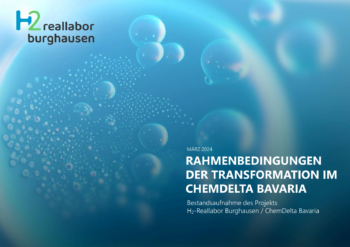How much do synfuels cost regarding taking the environment impacts into account when used in road transport?
What are the climate impacts of different synthetic fuels used in traffic? And what costs are associated with their production and use? These questions can be answered using the two methods of life cycle assessment and life cycle costing. When these methods are applied, it becomes apparent that the electricity mix is the most important lever for reducing both costs and climate impacts. The following paper is based on the presentation given by Sofia Haas as part of the BEniVer project at the Fuel Science Conference.
The BEniVer project
The BEniVer project, a project that provided scientific accompany for technical collaborative projects from 2018 to 2023, investigated the impact of different fuels (e.g. synthetic gasoline, methane,…) and modes of transport (e.g. passenger cars, heavy commercial vehicles, ships, aircraft) on the climate. Depending on the group, the 15 collaborative projects supported dealt with specific fuels and production processes or special application areas.
Approach and methodology
Within the scope of the project, both the Life Cycle Assessment (LCA) method and Life Cycle Costing (LCC) were carried out. While LCA (standardized in ISO 14040 and 14044) evaluates environmental impacts, LCC considers the corresponding total costs incurred. In both methods, the entire life cycle (“cradle-to-grave”) is considered – from raw material extraction to disposal. Furthermore, it is possible to combine these two methods by adding environmental costs based on LCA results to the total costs of LCC.
Life cycle assessment and life cycle costing in the BEniVer project
In this project, the described methods of LCA and LCC were used to investigate different synthetic fuels such as methane, methanol, hythane, gasoline, diesel, dimethyl ether (DME), ammonia, sustainable aviation fuel (SAF), as well as their deployment in different modes of transport such as passenger cars, light and heavy-duty vehicles, ships and aircrafts.
As shown in Figure 1, the entire life cycle from the sourcing of raw materials up to the deployment of the fuels was considered. Assumptions were made that the production and deployment would take place in Germany. Furthermore, either project-specific data or generic assumptions were used for the calculation. The electricity mix in Germany is assumed as the source of electricity.
Regarding the LCC, the total costs of the fuels over the entire life cycle were calculated. These consist amongst others of costs for production, purchase, maintenance and repair. The results of these two evaluations were then combined and an environmental perspective was added to the total costs. For this purpose, the environmental costs of greenhouse gas emissions were added to the total operating costs. These environmental costs are costs for the society, which are caused by environmental impacts. They are published by the Federal Environment Agency of Germany and include, for example, costs arising from damage to health and materials or crop failures. In 2020, they are assumed to be 195 € 2020/t CO2e [1].

Figure 2 shows exemplary results of the life cycle assessment with regard to the greenhouse gas potential (GWP) from the use of synthetic diesel, DME, methane and methanol as well as fossil methane and fossil diesel in heavy-duty vehicles.
It can be seen that in 2018, the greenhouse gas (GHG) emissions for synthetic fuels are significantly higher than those of the fossil reference fuels – the decisive factor here being emissions from the electricity generation for the electrolysis. Taking into account future developments, such as the increasing use of renewable energies, the GHG emissions of synthetic fuels in 2045 are lower than those of the fossil reference fuels.

Figure 2 shows exemplary results of the life cycle assessment with regard to the greenhouse gas potential (GWP) from the use of synthetic diesel, DME, methane and methanol as well as fossil methane and fossil diesel in heavy-duty vehicles.
It can be seen that in 2018, the greenhouse gas (GHG) emissions for synthetic fuels are significantly higher than those of the fossil reference fuels – the decisive factor here being emissions from the electricity generation for the electrolysis. Taking into account future developments, such as the increasing use of renewable energies, the GHG emissions of synthetic fuels in 2045 are lower than those of the fossil reference fuels.

The evaluation of life cycle costing (see Figure 3) also shows that production costs have the greatest influence on total costs. Considering the environmental costs, the total costs increase by 78 %.

The evaluations of the LCA and LCC show that the production phase is one of the main driver of total costs and GHG emissions. A possible lever for reducing these is the use of renewable energies for the production of synthetic fuels.
Literature
[1] Umweltbundesamt (2020): Methodenkonvention 3.1 zur Ermittlung von Umweltkosten Kostensätze https://www.umweltbundesamt.de/publikationen/methodenkonvention-umweltkosten

